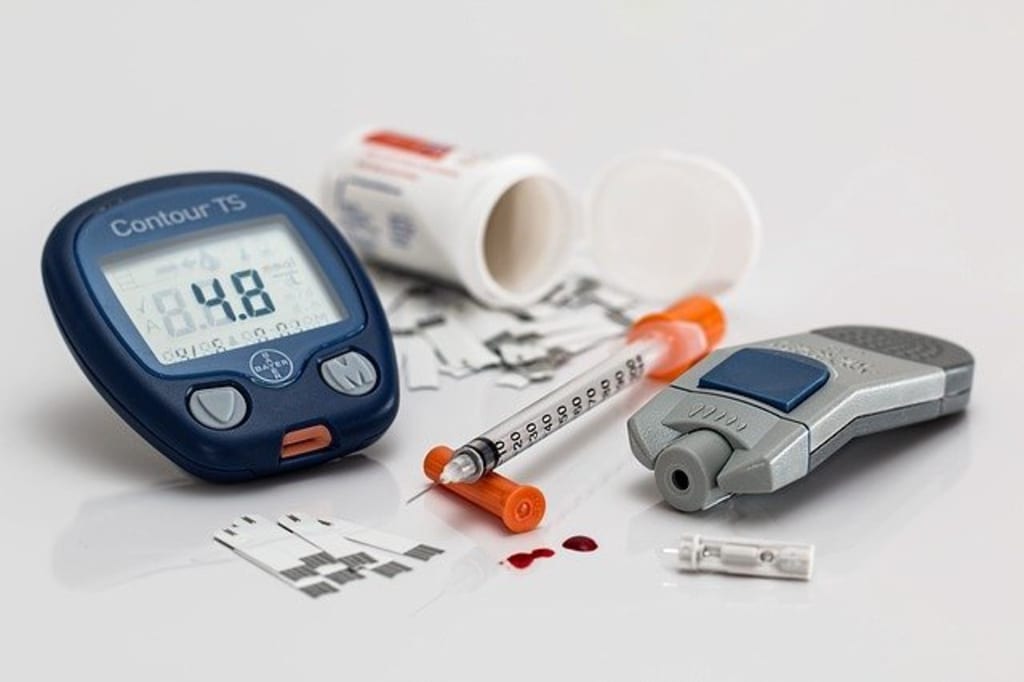Diabetic: In the Flesh
An Informative Series of Personal Experience

Thus far, the majority of my postings have been relatively abstract and rather impersonal. This article, however, comes from my own thoughts and feelings. It is a pen-and-paper expression of my limbic and logical self. Please remember that the following is my individual perceptions and points-of-view and is not intended to belittle or influence or convince.
As a Type 1 Diabetic, I feel that Diabetes is often an ailment, in my experience, which falls to the waist-side of the healthcare industry. It is frequently misunderstood and constantly surrounded by misinformation. Diabetes, sometimes called ‘the sugar sickness’ or ‘the fat person’s disease’, is much more complicated than simply having too much sugar or being overweight. But the purpose of this article series is not to give you a detailed medical rundown of the specific physiological events which take place; more so, I want to share my experience as a diabetic and provide a little clarity on some basic misconstrued conclusions or ideas regarding Diabetes.
Today’s Topic is:
Type 1 vs. Type 2
It has become apparent to me that there are many people who do not know that Diabetes is actually categorized into two separate types: Type 1 and Type 2. However, both types deal with the production and absorption of insulin. Insulin is one of your body’s key ingredients in utilizing the energy we get from food, primarily carbohydrates and sugars. Without insulin, our body cannot function.
**Insulin bubbles attach to the tiny food particles from our digestion. The insulin helps the food particles into the cells of our organs, muscles, bones, etc. This process is necessary to provide the various body parts energy.**
Here are the basics on each type of Diabetes:
Type 1: Often developed genetically and/or inherited through family bloodlines. It is possible to be born without any signs or symptoms of Type 1 and develop it later in life. That is actually what happened to me. I spent the first 30 years of my life without any diabetic indications, and then received the diagnosis when I was hospitalized for a separate medical condition. Essentially, Type 1 Diabetes develops because your pancreas, one of your secondary digestive organs, doesn’t make enough, or any, insulin. Type 1 diabetics are considered ‘insulin dependent’ as we need to take multiple injections of artificially manufactured insulin throughout the day. For now, this is the only treatment Type 1 diabetics have. Furthermore, Type 1 diabetics not only lack the necessary amount of insulin, we also have difficulty absorbing it.
Type 2: This type of Diabetes primarily develops overtime because your body is unable to absorb insulin. There are many factors which can affect your body’s ability to absorb insulin, one of the most common we see is weight gain. The accumulation of fat cells can create a barrier for the insulin to be absorbed into the vital organs and anatomically functioning parts of the body. This is typically why individuals who are considered overweight and obese are prone to developing this type of diabetes. Type 2 diabetics are often able to improve the symptoms of their Diabetes through weight loss, exercise regimens, and medication. Also, type 2 diabetics usually have adequate production of insulin via their pancreas.
Side Note: Both types of diabetics have difficulty with insulin absorption. Insulin absorption is part of a vicious cycle that diabetics struggle with constantly:
**In order to have energy, the insulin needs to find the food particles. In order to find the food particles, there has to be adequate blood flow. In order to have adequate blood flow, the body has to be in motion. In order for the body to be in motion, the body has to have energy.**
I hope this clears up a few misconceptions about the difference between the two types of Diabetes. There will be more to come on my ‘Diabetic: In the Flesh – An Informative Series of Personal Experience’ to provide a better look into the day-to-day life of a diabetic. Thanks for reading. 😊
About the Creator
Megan Bald
Medical Professional turned writer.






Comments
There are no comments for this story
Be the first to respond and start the conversation.